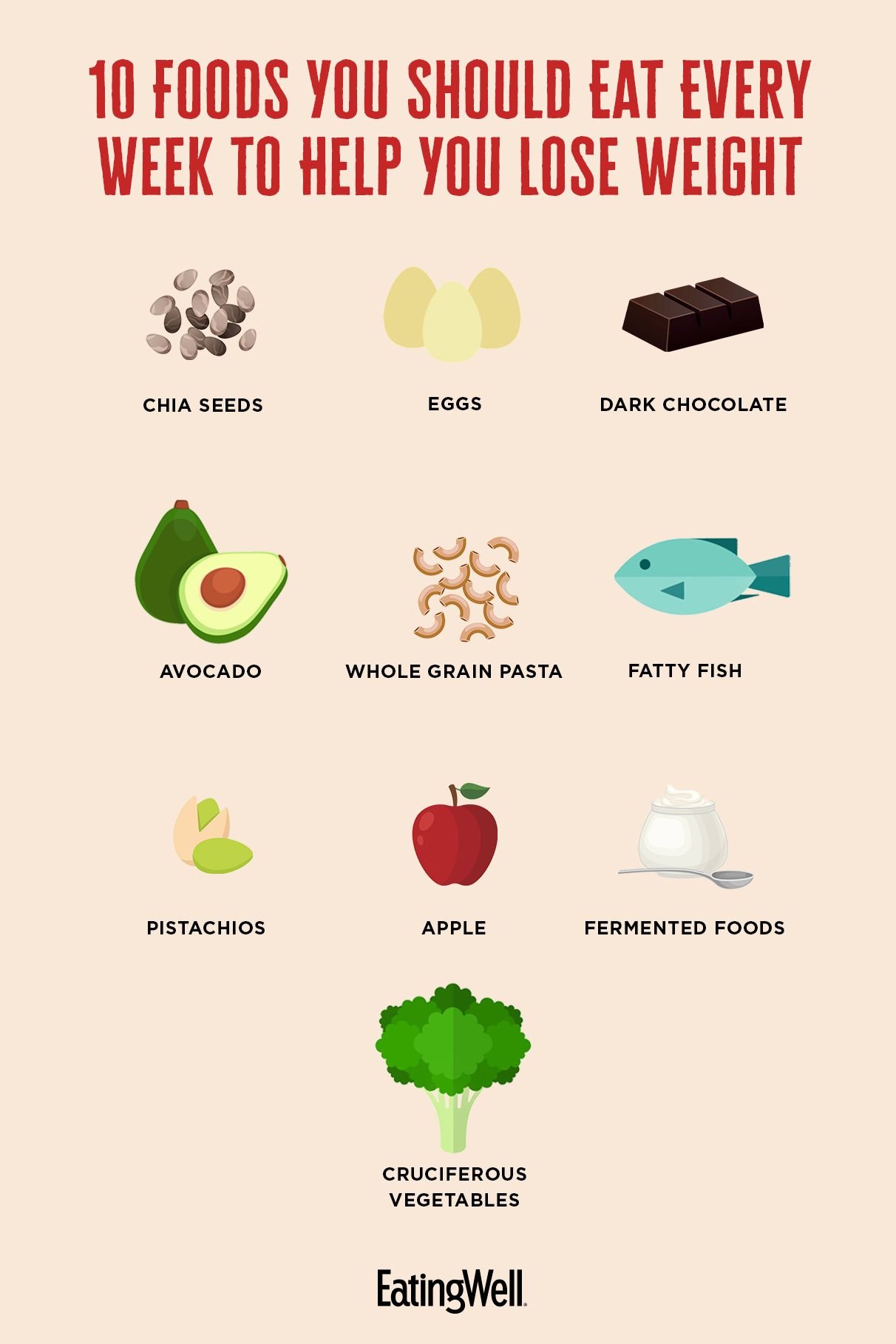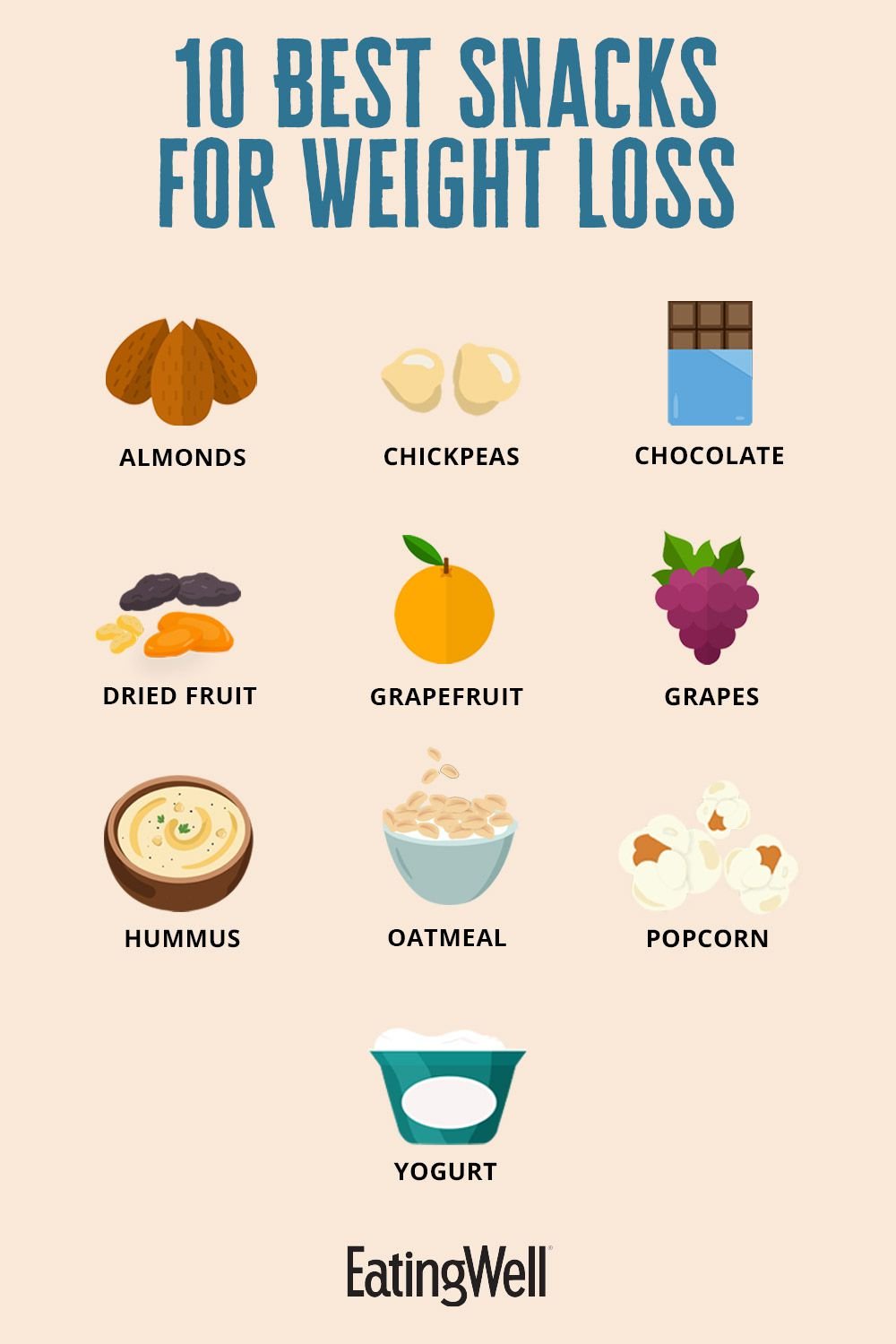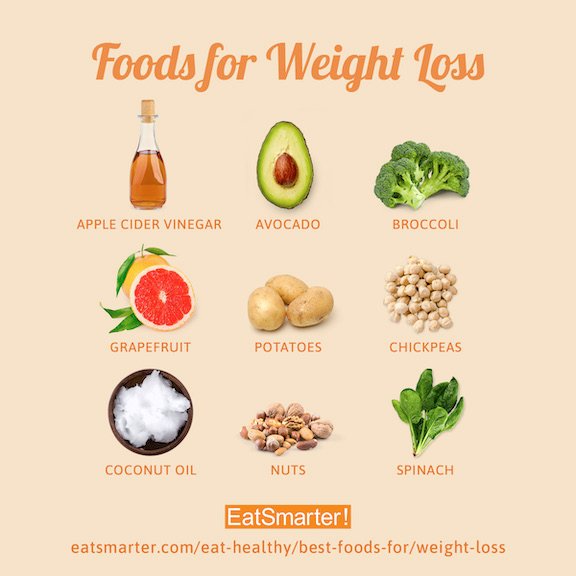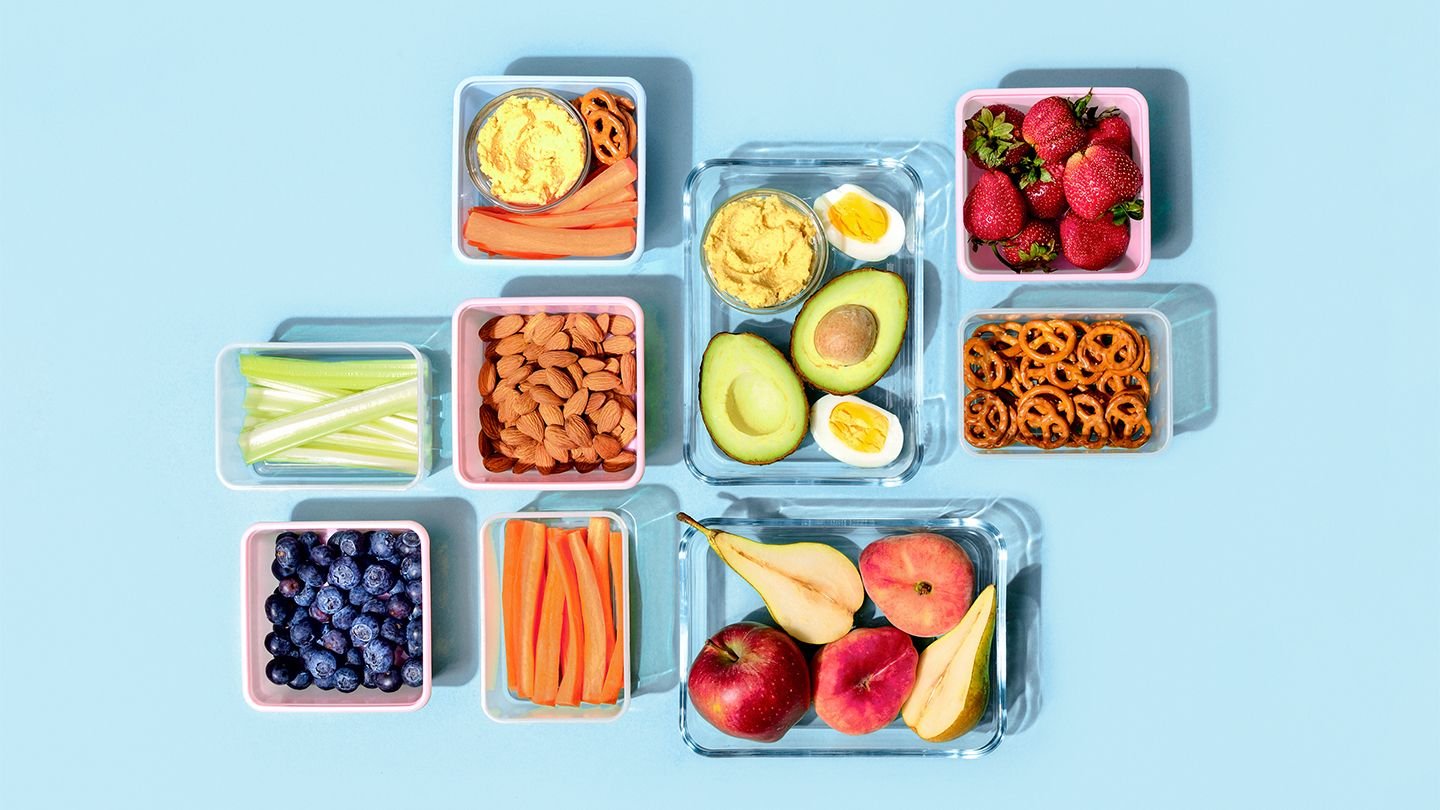Are you looking for ways to manage your weight and achieve a healthier lifestyle? Look no further! In this article, we will explore the best foods that can aid you in your weight management journey. By incorporating these nutritious foods into your diet, you can take a positive step towards achieving your health and wellness goals.

This image is property of i.dietdoctor.com.
Protein-rich foods
Lean meats
Lean meats, such as chicken breast and turkey, are excellent sources of protein. Besides being low in calories, they are also packed with essential nutrients like iron and zinc. Including lean meats in your diet can help you feel satisfied and keep you full for longer periods, which can prevent overeating and aid in weight management. Grilling, baking, or sautéing lean meats are some of the healthier cooking methods to retain their nutritional value and minimize added calories.
Fish
Fish, such as salmon, tuna, and trout, are not only delicious but also incredibly nutritious. They are rich in omega-3 fatty acids, which have been linked to numerous health benefits, including weight management. Omega-3s can help reduce inflammation, boost metabolism, and regulate appetite. Incorporating fish into your diet a couple of times a week can be a great way to add protein while keeping your calorie intake in check.
Beans and legumes
Beans and legumes, like black beans, lentils, and chickpeas, are excellent plant-based protein sources. They are also high in fiber, which aids in digestion and helps keep you feeling full. The combination of protein and fiber makes beans and legumes an ideal choice for weight management, as they promote satiety and prevent overeating. They can be enjoyed as a side dish, added to salads, or used as a base for hearty soups or stews.
Greek yogurt
Greek yogurt is not only creamy and delicious but also a fantastic source of protein and probiotics. It contains about twice as much protein as regular yogurt, making it a filling and satisfying snack or breakfast option. The probiotics in Greek yogurt promote a healthy gut and may improve digestion, which can support weight management. Try pairing it with fresh fruits or adding it to smoothies for a nutritious and protein-packed meal.
Cottage cheese
Cottage cheese is another protein-rich food that can aid in weight management. It is low in calories and high in protein, making it an excellent option for those looking to lose weight or maintain a healthy weight. Cottage cheese can be enjoyed on its own, topped with fresh fruits, or used as a substitute for higher-calorie ingredients in recipes like dips or spreads. Its versatility and nutritious profile make it a valuable addition to any diet focused on weight management.
Fiber-rich foods
Fruits
Fruits are not only delicious but also rich in dietary fiber, which can help with weight management. Fiber adds bulk to your diet, keeping you feeling full and satisfied, which can prevent overeating. Additionally, fruits are packed with essential vitamins, minerals, and antioxidants. When choosing fruits for weight management, opt for whole fruits rather than fruit juices, as they contain more fiber and less added sugars.
Vegetables
Vegetables are some of the most fiber-rich foods available and a vital component of a weight management diet. They are low in calories, high in water content, and packed with essential nutrients. Leafy greens, like spinach and kale, are particularly beneficial, as they are rich in fiber and provide a wide range of vitamins and minerals. Including a variety of vegetables in your meals can contribute to weight loss or maintenance while nourishing your body.
Whole grains
Whole grains, such as quinoa, brown rice, and oats, are excellent sources of fiber and can support weight management. Unlike refined grains, whole grains retain their natural fiber content, which aids in digestion and helps control hunger. Consuming whole grains can help you feel fuller for longer, reducing the likelihood of overeating. They can be used as a base for salads, added to soups, or enjoyed as a side dish with lean proteins and vegetables.
Chia seeds
Chia seeds are tiny powerhouses of nutrition, packed with fiber, protein, and healthy fats. When mixed with liquid, they form a gel-like consistency, which can help you feel full and satisfied. Adding chia seeds to your meals or snacks can increase their fiber content, promoting satiety and aiding in weight management. They can be sprinkled over yogurt, added to smoothies, or used as a topping for salads and oatmeal.
Flaxseeds
Flaxseeds are another great source of fiber that can be beneficial for weight management. They are rich in both soluble and insoluble fibers, which can help regulate blood sugar levels, promote bowel regularity, and keep you feeling full. Flaxseeds can be ground and added to baked goods, sprinkled over cereals or salads, or incorporated into smoothies. Remember to consume them ground or in the form of flaxseed oil to unlock their full nutritional benefits.

This image is property of www.eatingwell.com.
Healthy fats
Avocados
Avocados are not only delicious but also a fantastic source of healthy fats. They are rich in monounsaturated fats, which have been associated with reduced belly fat and improved heart health. Despite their high calorie content, avocados can contribute to weight management when consumed in moderation. Their creamy texture and nutty flavor make them a versatile addition to salads, sandwiches, or as a topping for whole grain toast.
Nuts and seeds
Nuts and seeds, like almonds, walnuts, and pumpkin seeds, are excellent sources of healthy fats, protein, and fiber. Despite being calorie-dense, they can actually aid in weight management when consumed in appropriate portions. The combination of protein, fiber, and healthy fats in nuts and seeds helps promote satiety, preventing excessive snacking. They can be enjoyed as a snack on their own, added to salads, or used as toppings for yogurts and smoothies.
Olive oil
Olive oil is a staple in the Mediterranean diet and an excellent source of monounsaturated fats. It can be used as a healthier alternative to cooking oils or dressings high in saturated or trans fats. Consuming olive oil in moderation can have various health benefits, including weight management. Its rich flavors can enhance the taste of salads, roasted vegetables, or grilled proteins, making it a valuable addition to any weight-conscious kitchen.
Coconut oil
Coconut oil has gained popularity in recent years due to its unique combination of fatty acids. While it is high in saturated fat, it is primarily composed of medium-chain triglycerides (MCTs), which are metabolized differently than long-chain fatty acids. Some studies suggest that the MCTs in coconut oil may increase satiety and boost metabolism, potentially supporting weight management. However, it is important to note that coconut oil should be used in moderation due to its high calorie content.
Low-calorie foods
Leafy greens
Leafy greens, such as spinach, kale, and Swiss chard, are incredibly low in calories and high in nutrients. They are packed with fiber, vitamins, minerals, and antioxidants, making them an excellent choice for weight management. Incorporating leafy greens into your meals can provide bulk and volume with minimal calories, helping you feel full without overindulging. They can be used as a base for salads, added to wraps, or sautéed as a side dish.
Cruciferous vegetables
Cruciferous vegetables, like broccoli, cauliflower, and Brussels sprouts, are not only nutritious but also low in calories. These vegetables are rich in fiber, which aids in digestion and promotes satiety. Additionally, they contain compounds that have been associated with health benefits, including weight management. Whether steamed, roasted, or stir-fried, cruciferous vegetables make a delicious and low-calorie addition to any meal.
Berries
Berries, such as strawberries, blueberries, and raspberries, are not only sweet and flavorful but also low in calories and high in fiber. They are packed with antioxidants, vitamins, and minerals that contribute to overall health. The fiber content in berries helps you feel full and satisfied, preventing overeating. Enjoy them as a snack, add them to smoothies, or incorporate them into your breakfast routine for a nutritious and refreshing start to the day.
Citrus fruits
Citrus fruits, like oranges, grapefruits, and lemons, are not only refreshing but also low in calories. They are high in vitamins, particularly vitamin C, and contain fiber, which aids digestion and promotes feelings of fullness. The natural sweetness and acidity of citrus fruits make them a perfect addition to salads, desserts, or simply enjoyed on their own. Including citrus fruits in your diet can provide essential nutrients while keeping your calorie intake in check.
Lean proteins
Lean proteins, such as skinless chicken, turkey, and lean cuts of beef or pork, are excellent low-calorie options for weight management. They are rich in essential amino acids, which are the building blocks of proteins. By including lean proteins in your meals, you can stimulate muscle growth, support satiety, and reduce overall calorie intake. Grilling, baking, or broiling lean proteins are healthier cooking methods that help retain their nutritional value.

This image is property of www.eatingwell.com.
Complex carbohydrates
Sweet potatoes
Sweet potatoes are not only delicious but also an excellent source of complex carbohydrates. Unlike simple carbs, which can cause blood sugar spikes, complex carbohydrates provide sustained energy and promote feelings of fullness due to their fiber content. Sweet potatoes are also rich in vitamins A and C, which contribute to overall health. Baking or roasting sweet potatoes can bring out their natural sweetness without the need for added fats or sugars.
Quinoa
Quinoa is a gluten-free grain that is not only rich in complex carbohydrates but also a complete protein source. It contains all the essential amino acids that the body needs for optimal function. The high fiber and protein content in quinoa make it a satisfying option for weight management. It can be used as a base for salads, added to soups or stews, or enjoyed as a side dish to provide a nutritious and filling meal.
Brown rice
Brown rice is a whole grain that provides more fiber, vitamins, and minerals than its refined counterpart, white rice. The fiber in brown rice helps regulate digestion, maintain stable blood sugar levels, and promote feelings of fullness. Choosing brown rice over white rice can be a simple yet effective way to increase your fiber intake and support weight management. It can be enjoyed as a side dish or used as a base for stir-fries, grain bowls, or pilaf.
Oats
Oats are a nutritious and versatile grain that provides a good amount of complex carbohydrates, fiber, and essential nutrients. They are particularly high in soluble fiber, which can help lower cholesterol levels and promote satiety. Eating oats for breakfast can keep you full throughout the morning, reducing the desire for unhealthy snacking. Whether in the form of oatmeal, overnight oats, or added to baked goods, oats are a satisfying and nourishing choice.
Buckwheat
Buckwheat is a gluten-free grain that is rich in complex carbohydrates, fiber, and various nutrients. It is high in resistant starch, a type of fiber that resists digestion and can aid in weight management by reducing calorie absorption. Buckwheat can be cooked and enjoyed as a side dish, added to salads, or ground into flour for use in baking. Its unique taste and nutritional profile make it a valuable addition to a balanced diet focused on weight management.
Hydrating foods
Watermelon
Watermelon is not only a refreshing and delicious fruit but also a hydrating food that can support weight management. It is made up of about 92% water, making it an excellent choice for staying hydrated. The high water content in watermelon can contribute to feelings of fullness and reduce the likelihood of overeating. Enjoy watermelon as a snack, in salads, or blended into a refreshing beverage to stay hydrated while supporting your weight management goals.
Cucumber
Cucumbers are another hydrating food that can help with weight management. Like watermelon, cucumbers are primarily composed of water, providing hydration without adding significant calories. They also contain fiber, which contributes to feelings of fullness. Cucumbers can be added to salads, sliced and used as a base for healthy sandwich fillings, or enjoyed as a refreshing snack on their own to support your weight management journey.
Zucchini
Zucchini is a versatile vegetable that is low in calories and high in water content. It can be a great option for weight management, as its high water and fiber contents make it a filling choice. Zucchini can be spiralized into noodles, used as a base for vegetable-packed stir-fries, or added to baking recipes for healthier alternatives. Incorporating zucchini into your meals can help increase your vegetable intake and support your weight management goals.
Grapefruit
Grapefruit is not only a tangy and juicy citrus fruit but also a hydrating food with potential weight management benefits. It has a high water content and is low in calories, making it a satisfying choice for snacking or as part of a balanced meal. Some studies suggest that grapefruit can aid in weight loss by reducing appetite and calorie intake. Enjoy grapefruit on its own, add it to salads, or include it in smoothies for a refreshing and nutritious treat.
Soup
Soup is a hydrating and satisfying food option that can support weight management. When made with nutritious ingredients, like vegetables, lean proteins, and whole grains, soup can provide a balanced meal with fewer calories. The high water content and volume of soup contribute to feelings of fullness, preventing overeating. Opt for homemade soups or low-sodium canned varieties to control the quality and nutrient content. Soups can be enjoyed as a standalone meal or as a starter to reduce calorie intake during the main course.

This image is property of images.eatsmarter.com.
Spices and herbs
Cayenne pepper
Cayenne pepper is not only a bold and spicy spice but also a potential aid in weight management. It contains a compound called capsaicin, which has been shown to increase metabolism and reduce appetite. Adding a dash of cayenne pepper to your dishes can liven up the flavors while potentially providing some weight management benefits. Start with a small amount and adjust according to your preferred level of spiciness.
Turmeric
Turmeric is a vibrant yellow spice commonly used in Indian cuisine. It contains curcumin, a powerful antioxidant with potential anti-inflammatory properties. Some studies suggest that curcumin may aid in weight management by reducing inflammation, improving insulin sensitivity, and regulating fat metabolism. Adding turmeric to dishes, such as curries, stir-fries, or roasted vegetables, not only enhances flavors but also provides potential health benefits.
Ginger
Ginger is a versatile herb with a distinct flavor that can support weight management. It has been used for centuries to aid digestion, reduce nausea, and improve overall gut health. Ginger may also increase metabolism and promote feelings of fullness. Incorporating fresh or ground ginger into your meals, such as marinades, stir-fries, or herbal teas, can provide both culinary and potential weight management benefits.
Cinnamon
Cinnamon is a warm and aromatic spice that can add a comforting flavor to various dishes. It may also support weight management by improving insulin sensitivity, helping to regulate blood sugar levels, and reducing cravings. Sprinkling cinnamon onto oatmeal, yogurt, or baked goods can enhance the taste profile while potentially providing some weight management benefits. Opt for true cinnamon (Ceylon cinnamon) rather than cassia cinnamon for the most health benefits.
Garlic
Garlic is a staple ingredient in many cuisines and is well-known for its unique flavor and potential health benefits. It contains a compound called allicin, which has been associated with various health benefits, including weight management. Allicin may help reduce inflammation, control appetite, and regulate fat metabolism. Adding garlic to your dishes, such as sauces, stir-fries, or roasted vegetables, can enhance flavors while potentially supporting your weight management goals.
Healthy snack options
Popcorn
Popcorn is a popular and satisfying snack option that can be a great choice for weight management when prepared in a healthy way. Air-popped popcorn is low in calories and high in fiber, making it a filling snack that can help control hunger. Avoid adding excessive butter or salt and opt for herbs, spices, or nutritional yeast to add flavor. Enjoy popcorn as a tasty and guilt-free snack option between meals.
Edamame
Edamame, also known as young soybeans, is a nutritious and protein-rich snack option. These vibrant green legumes are not only delicious but also packed with essential nutrients, including fiber and plant-based proteins. Edamame can be enjoyed steamed or boiled and lightly seasoned with salt, herbs, or spices. Its satisfying crunch and nutritional profile make it a filling snack option for weight management.
Hummus
Hummus is a creamy and flavorful dip made from chickpeas, tahini, olive oil, and various seasonings. It is not only delicious but also a nutritious snack option that can support weight management. Chickpeas are high in fiber and protein, while tahini provides healthy fats. Enjoy hummus as a dip for fresh vegetables, whole grain crackers, or as a spread on sandwiches or wraps. Its versatile nature and nutrient-dense profile make it an ideal choice for a healthy snack.
Almonds
Almonds are not only a tasty and convenient snack but also a nutrient-dense option for weight management. They are packed with healthy fats, fiber, protein, and essential vitamins and minerals. Almonds can promote feelings of fullness, prevent overeating, and contribute to overall satiety. However, portion control is crucial when consuming almonds to avoid excessive calorie intake. Enjoy a handful of almonds as a satisfying snack between meals.
Dark chocolate
Dark chocolate is not only indulgent but also a surprisingly healthy treat when consumed in moderation. It contains less sugar and more cocoa solids than milk chocolate, making it a richer source of antioxidants and potentially providing some health benefits. Dark chocolate can satisfy cravings for something sweet while supporting weight management. Opt for varieties with higher cocoa percentages (70% or more) and savor a small piece or two as an occasional treat.

This image is property of images.everydayhealth.com.
Portion control strategies
Using smaller plates
One effective strategy for controlling portion sizes is to use smaller plates. Research has shown that people tend to consume less when they eat from smaller plates, as it creates an optical illusion that makes the portion appear larger. By choosing smaller plates, you can reduce the amount of food you serve yourself, leading to a decrease in calorie intake and supporting weight management.
Eating mindfully
Practicing mindfulness during meals can help you become more aware of your body’s hunger and fullness cues, leading to better portion control. By paying attention to each bite, savoring the flavors, and eating slowly, you can give your brain enough time to recognize when you are satisfied. This can prevent overeating and promote a healthier relationship with food, ultimately supporting weight management.
Breaking meals into smaller portions
Instead of serving yourself one large portion, try breaking your meals into smaller, more manageable portions. This can help with portion control by allowing you to enjoy your food without overindulging. It is also beneficial to eat more frequently throughout the day, consuming smaller meals and healthy snacks. By spacing out your meals and snacks, you can prevent extreme hunger and the temptation to overeat.
Avoiding distractions while eating
Eating in front of distractions, such as the television or your computer, can lead to mindless overeating. When your attention is divided, it becomes easier to lose track of portion sizes and consume more calories than necessary. To practice portion control, make a habit of eating mindfully and focus solely on your meal. Sit at a table, away from distractions, and savor each bite. This allows you to be present and more aware of your body’s hunger and fullness signals.
Listening to hunger cues
Your body has built-in hunger and fullness cues that can guide you in determining appropriate portion sizes. Learning to listen to these cues is essential for portion control and weight management. Before eating, take a moment to assess your hunger level. Eat slowly and pay attention to when you start feeling satisfied. Stopping when you are no longer hungry, rather than when you are completely full, can help prevent overeating and promote a balanced approach to portion control.
Meal planning and preparation
Preparing meals in advance
Meal prepping is a highly effective strategy for portion control and weight management. By preparing your meals in advance, you have more control over the ingredients and portion sizes. Plan your meals for the week, batch cook, and portion them into individual containers. This allows you to have healthy meals readily available, reducing the likelihood of reaching for unhealthy options when hunger strikes. Incorporating a variety of the aforementioned protein-rich foods, fiber-rich foods, and complex carbohydrates can ensure balanced meals that support your weight management goals.
Batch cooking
Batch cooking is a time-saving method that allows you to cook larger quantities of food and portion them out for multiple meals. It is particularly useful for busy individuals who want to maintain a healthy diet while managing their weight. By cooking in bulk, you can control portion sizes, choose nutritious ingredients, and ensure balanced meals throughout the week. Store the prepared meals in the refrigerator or freezer, and you’ll have healthy options on hand whenever hunger strikes.
Using a food journal
Keeping a food journal can be a helpful tool for portion control and weight management. Track your meals, portion sizes, and any accompanying thoughts or feelings associated with eating. This can improve your awareness of portion sizes, eating patterns, and potential triggers for overeating. By reviewing your food journal regularly, you can identify any areas for improvement and make conscious decisions about portion control and healthier choices.
Avoiding processed foods
When it comes to portion control and weight management, avoiding processed foods is beneficial. Processed foods often come in larger portion sizes, are higher in calories, added sugars, and unhealthy fats. By preparing your meals with fresh, whole ingredients, you have more control over portion sizes and the nutritional value of your meals. Whole foods are typically more filling and nutrient-dense, which can support satiety and prevent overeating.
Buying fresh ingredients
By prioritizing fresh ingredients in your meal planning and preparation, you can ensure a nutrient-rich and well-balanced diet. Fresh produce, lean proteins, whole grains, and healthy fats provide essential nutrients and support portion control. When you have access to fresh ingredients, you can prepare flavorful meals that satisfy your taste buds while promoting satiety and weight management. Shop at local markets or consider growing your own fruits and vegetables to maximize freshness and nutritional quality.